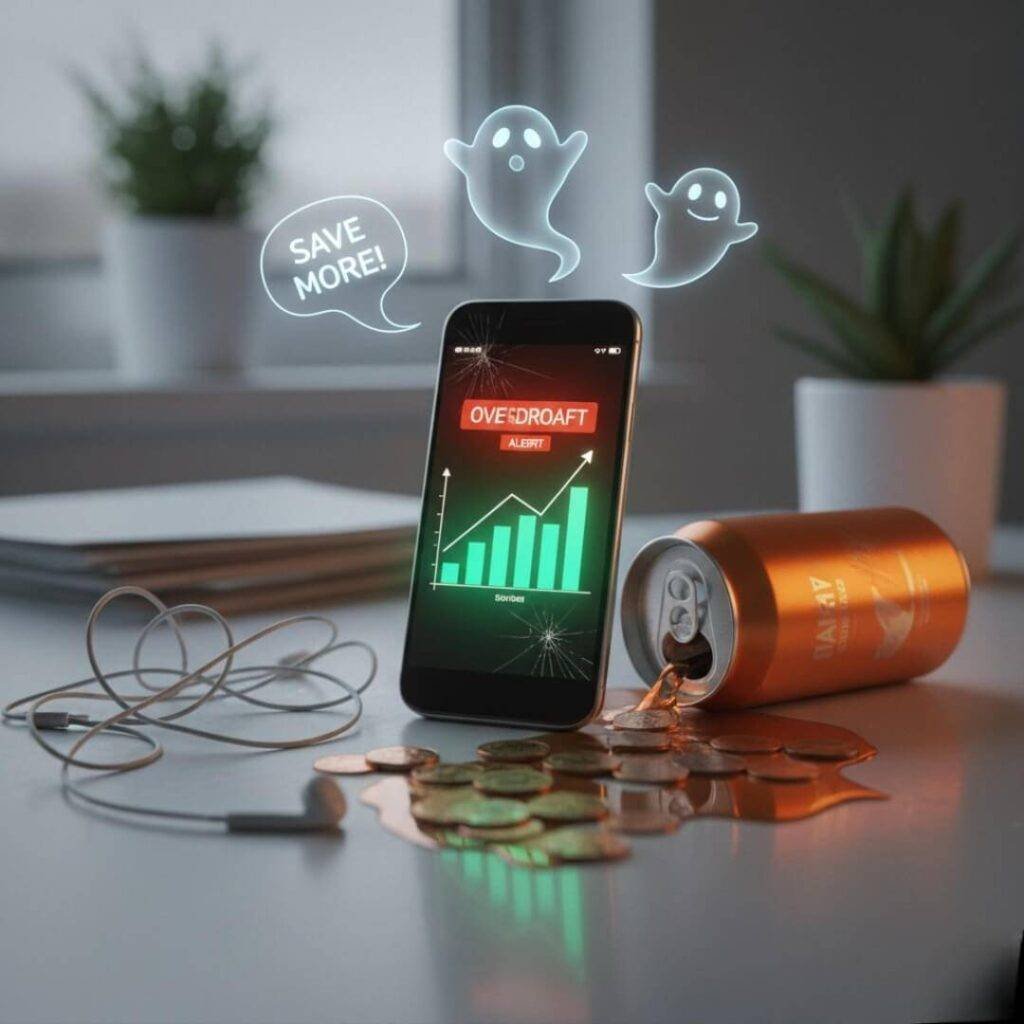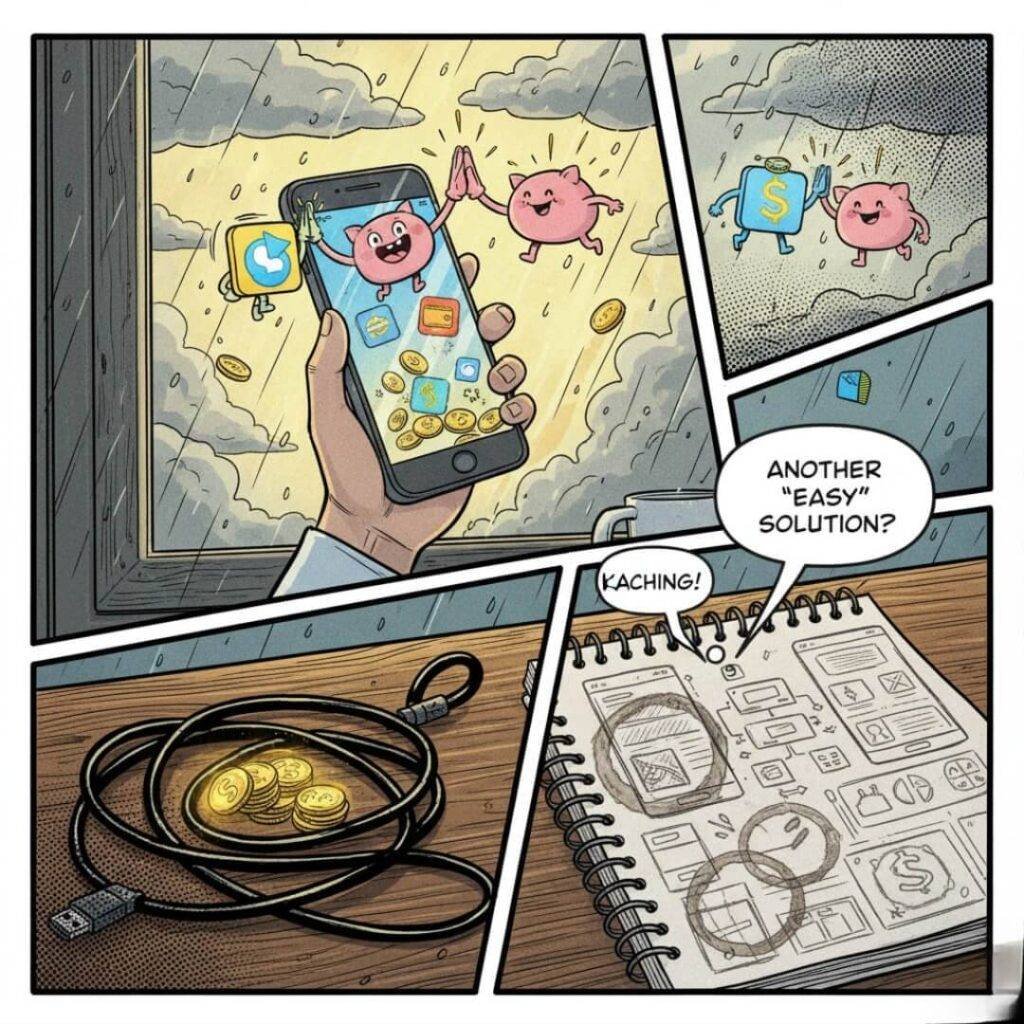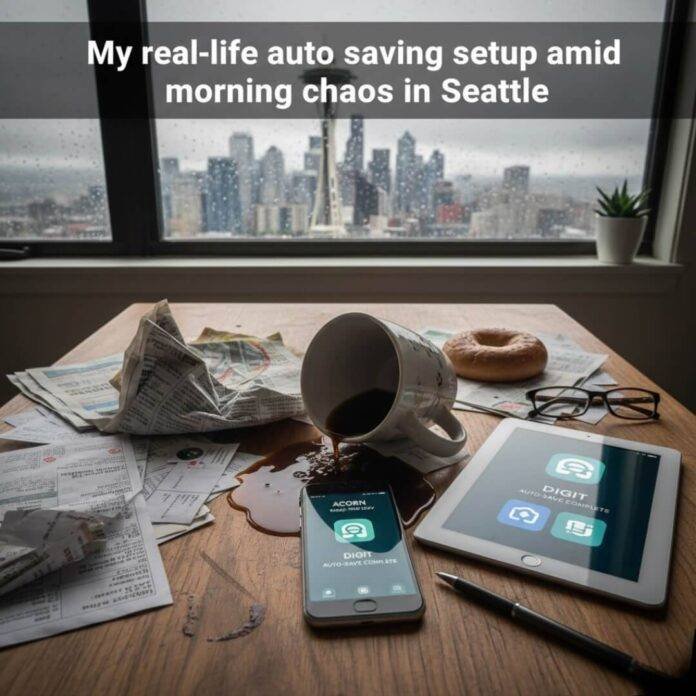Look, auto saving on any income has straight-up rescued my butt more times than I can count, especially now that I’m hunkered down in this drizzly Seattle apartment where rent eats half my paycheck before I even blink. Like, I remember last winter, right around Christmas 2024, I was staring at my fridge—bare except for some wilted kale and a half-eaten pizza—thinking, “How the heck am I gonna make it to payday?” That’s when I stumbled into setting up this auto transfer thing from my checking to savings, you know? It was supposed to be foolproof, but dude, I totally botched it at first by forgetting to adjust for that surprise car repair bill. Embarrassing as hell, overdrafting like a noob, but hey, that’s me—your average American dude fumbling through finances with coffee stains on my shirt.
Why Auto Saving on Any Income Is My Lifesaver Right Now
Seriously, auto saving on any income isn’t some fancy Wall Street trick; it’s for folks like me scraping by on freelance gigs that pay peanuts one month and a bit more the next. I mean, I used to think saving was for people with “real” jobs, but nah, turns out automating it makes it happen without me obsessing over every latte. Like, picture this: I’m out grabbing a burger in downtown Seattle, rain pounding on my umbrella, and my phone dings—bam, $20 auto-zapped to savings. Feels like magic, but it’s just an app doing the heavy lifting. Of course, I’ve got contradictions here; I preach this stuff, but sometimes I sneak into the app and pause a transfer ’cause I “need” those new sneakers. Raw honesty? It works best when I lock myself out, you know?
Anyway, the beauty is it scales to whatever you’re pulling in. Back when I was on minimum wage flipping burgers in college, I started with like $5 a week—tiny, but it added up without me noticing. Now, with my inconsistent income from graphic design side hustles, I bump it to 10% of each deposit. No judgment if you’re starting smaller; that’s my flawed take as someone who’s still learning.

My Epic Fail and Comeback with Auto Saving on Any Income
Oh man, let’s dive into my personal screw-up story, ’cause nothing teaches like embarrassment. So, early 2025, I’m in this cramped shared house in Capitol Hill, Seattle—smells like wet dog and instant noodles constantly—and I set up auto saving on any income through my bank app. Thought I was a genius, transferring $50 every payday. But boom, utility bill hits harder than expected ’cause of that brutal cold snap, and wham, overdraft fees pile on. I was cursing at my phone screen, face hot with shame, thinking “Why me?” Yet, that’s where the learning kicked in; I tweaked it to round up purchases instead, like turning my daily coffee run into sneaky savings. Surprising reaction? It felt empowering, even if I grumbled about it.
From that mess, I realized auto saving on any income needs buffers. Build a mini emergency fund first—maybe $100—to avoid my pitfalls. And hey, check out this solid rundown from NerdWallet on automating transfers without the drama. They’ve got tips that mirrored my recovery, like starting small to build momentum.
Simple Hacks for Auto Saving on Any Income That I Swear By
Alright, let’s get practical—’cause talking theory is boring, right? Here’s some hacks from my trial-and-error life. First off, use apps that round up your spends; I linked mine to my debit card, and boom, spare change auto-saves without me lifting a finger. Like, bought a $3.75 taco? It rounds to $4 and zaps 25 cents away. On my low-income months, that’s painless.
- Set it and forget it: Auto-transfer a percentage right after payday. I do 5-10%, depending on how flush I feel.
- Micro-challenges: Save the equivalent of one skipped takeout per week—mine’s usually that overpriced pho from the food truck down the block.
- Link to goals: I name my savings pots stuff like “Escape Seattle Rain Fund” to make it fun, even if it’s contradictory ’cause I kinda love the vibe here.
- Track without obsessing: Glance at progress monthly; I use a free app that charts it like a video game level-up.
These aren’t perfect—sometimes I dip in for “emergencies” like concert tickets—but they keep auto saving on any income rolling. For more structured advice, peep this guide from Bank of America on expense tracking to fuel your autosaves. It helped me cut the fat from my budget.

Tools and Apps That Make Auto Saving on Any Income a Breeze
Dude, tools are key—without ’em, I’d be lost. My go-to is Acorns for rounding up, ’cause it’s idiot-proof for someone like me who forgets passwords constantly. Then there’s Digit, which analyzes your spending and auto-saves what you won’t miss; saved me during that slow freelance month in summer 2025 when gigs dried up. Banks like Ally offer auto-transfers too, with high-yield savings to boot.
But real talk, I tried a fancy one once and hated the fees—switched back to basics. Contradiction? Yeah, I love tech but get overwhelmed. Start simple: Your bank’s app probably has it built-in. For low-income folks, check free options to avoid extra costs.
Pro tip: Combine with budgeting apps like Mint to see the big picture. I reference this CFPB guide on automatic saving strategies often; it’s gold for beginners.

Overcoming Hurdles in Auto Saving on Any Income
Hurdles? Oh, plenty. Like when motivation dips—I mean, Seattle’s endless gray skies don’t help—and I wanna splurge. My trick? Remind myself of that time auto saving covered a vet bill for my cat’s random hairball drama. Surprising, but it built resilience.
If income’s super variable, like mine, auto-save based on inflows, not fixed amounts. And forgive slip-ups; I’m human, you know? For extra inspo, this SoFi piece on low-income saving nailed my mindset shift.
Anyway, wrapping this up like our chat’s running long—auto saving on any income ain’t perfect, but it’s kept me afloat through US economic rollercoasters, from inflation spikes to gig economy BS. Give it a shot; start tiny, like I did. What’s your first auto-save gonna be? Drop it in the comments, or hit me up—let’s swap war stories. Seriously, try one hack today; your future self’ll thank ya.












